It’s no secret that the Philippines is one of the countries that have been hit hard by the pandemic. Not only do COVID-19 cases continue to skyrocket, but vaccine rollout is also moving at a snail’s pace versus other countries in Southeast Asia. Along with these, there’s also the rising unemployment rate, with over four million citizens losing their jobs and other means of income due to indefinite lockdowns.
Sometime in April 2021, local furniture designer Ana Patricia Non talked about her frustration with the ‘lack of action’ from the Philippine government. And this is what compelled her to initiate a community pantry, which accepts and gives out in-kind donations in the form of grocery items. For those who live in the Philippines, you’ve probably already heard countless news about community pantries by now. But for the benefit of those who don’t, here’s what you need to know.
Fast facts on the community pantry movement
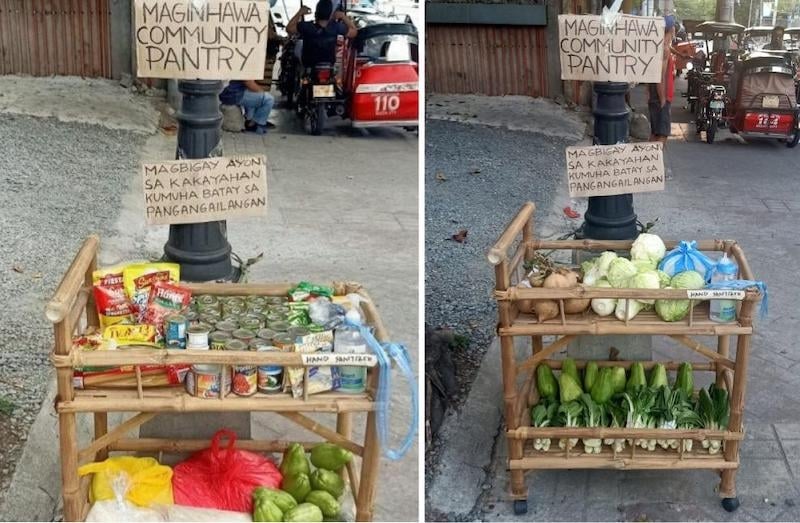
Image credit: AP Non
What started out as a tiny bamboo cart along Maginhawa Street in Quezon City, Metro Manila has quickly spread in various parts of the country; almost like an overnight sensation, if we’re being honest! And yet they all have the same purpose: “Give what you can, take only what you need.” It basically stems from the bayanihan spirit: An aspect of Filipino culture wherein members of a community unite to help one another, without expecting anything in return.
In the ‘original’ community pantry on Maginhawa Street, you’ll find various dietary necessities such as rice, vegetables, milk, coffee, canned goods, soup, and even ingredients. It also has other items like face masks, medicine, hand sanitiser, and soap — which we all know are completely essential especially during the pandemic. Monetary donations are also welcome!
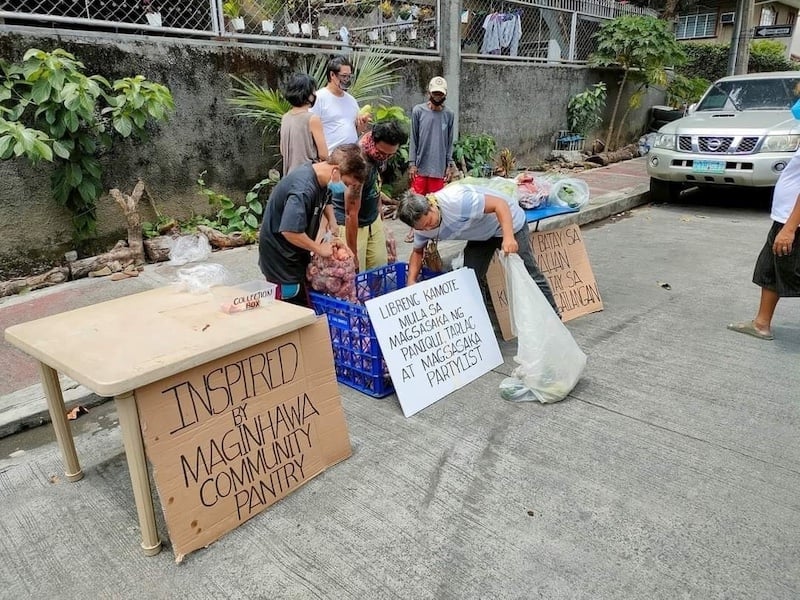
Image credit: AP Non
It didn’t take long for other Filipinos, both in Metro Manila and other provinces, to follow suit. In fact, there have been more than 350 community pantries in the entire country at the time. And mind you, this was just a week after the first one on Maginhawa Street opened.
“There’s nothing like the strength of Filipinos’ bayanihan spirit. Everyone is welcome [in the community pantry], regardless of age, gender, ability, religion, ethnicity, socio-economic class, and political belief,” said Non in one of her posts.
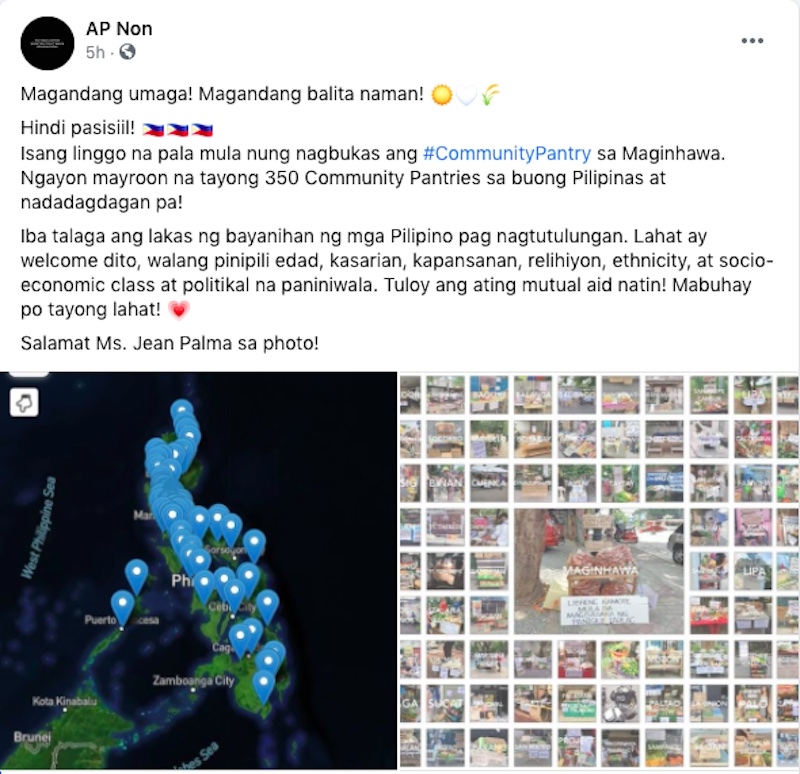
Image credit: AP Non
Rather than romanticising resilience in these uncertain times, Non and other community pantry organisers place the spotlight on Filipinos’ solidarity and resourcefulness.
“People want to do something, and they are tired of the inaction of the government. There are people going hungry, and they want to help,” said Jomar Fleras, executive director of the non-profit Rise Against Hunger, in an interview with The Straits Times. His organisation runs the largest network of privately funded food banks in the country.
Similar community pantry concepts
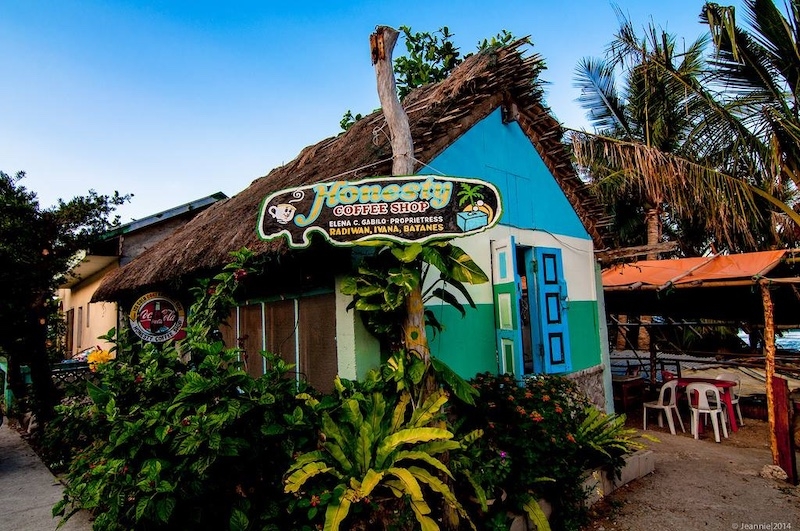
Image credit: Honesty Coffee Shop Facebook Page
Granted, this community pantry concept is nothing new. Even before the pandemic happened, there have already been several ‘honesty stores’ in different parts of the globe. In the Philippines alone, there’s one called the Honesty Coffee Shop in the northernmost province of Batanes. Established in 1995, customers can come and go as they please without the presence of store attendants.
Last year, a similar initiative called ‘sharing pantries’ made waves in Thailand, which spread to over 40 provinces. However, these eventually stopped once their government eased quarantine restrictions and locals were able to return to work again. In the United States, ‘food banks’ became prevalent especially during the onset of the COVID-19 pandemic.
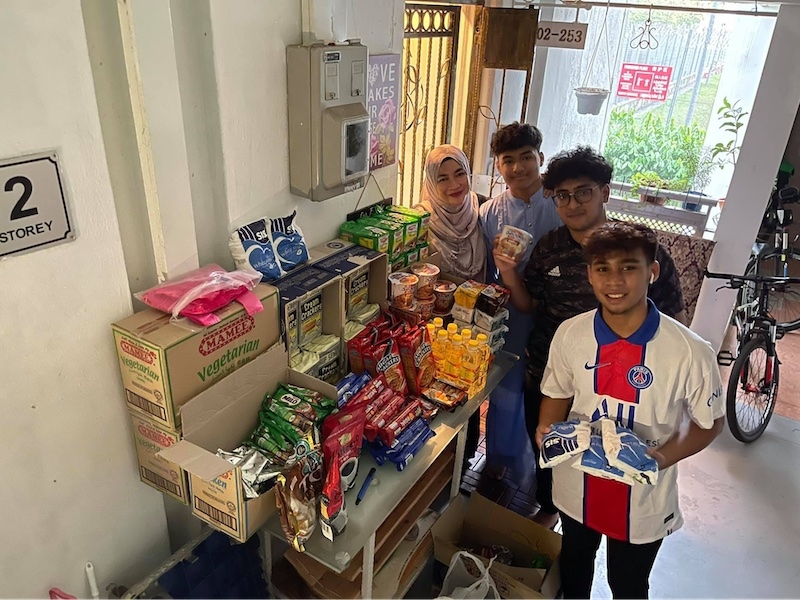
Image credit: Fariq Abm
Meanwhile, in the residential town of Tampines in Singapore, a 24-hour ‘free mini mart’ was recently set up by Asanul Fariq Sani. Otherwise called an infaq (a type of charity for the betterment of society) corner, this initiative was started by Fariq and his family in time for Ramadan. Aside from grocery items, they’re also planning on giving away cooked food.
Also read: We Can Learn So Much From This Filipina’s Community Pantry Initiative
At the end of the day, community pantries in the Philippines are merely a band-aid solution to help underprivileged Filipinos. Its sustainability alone is pretty much subject to debate. According to Fleras, these are unlikely to last, especially as more and more people begin to line up for free food.
“It can’t just be food left on the table, and people rummaging through the stuff to see what they want. Community pantries would eventually have to be run together with an established charity group, or with the government itself, in order to scale up,” he told The Straits Times.
Still, one cannot deny that these certainly get the job done, especially in a time when thousands of people are struggling to make ends meet. If anything, it is a cause worth putting every ounce of effort into. But with national politics threatening to halt the community pantry movement, its future remains up in the air. For now, only time will tell whether or not this could be a catalyst for bigger change to happen.
Facebook image credit: AP Non





